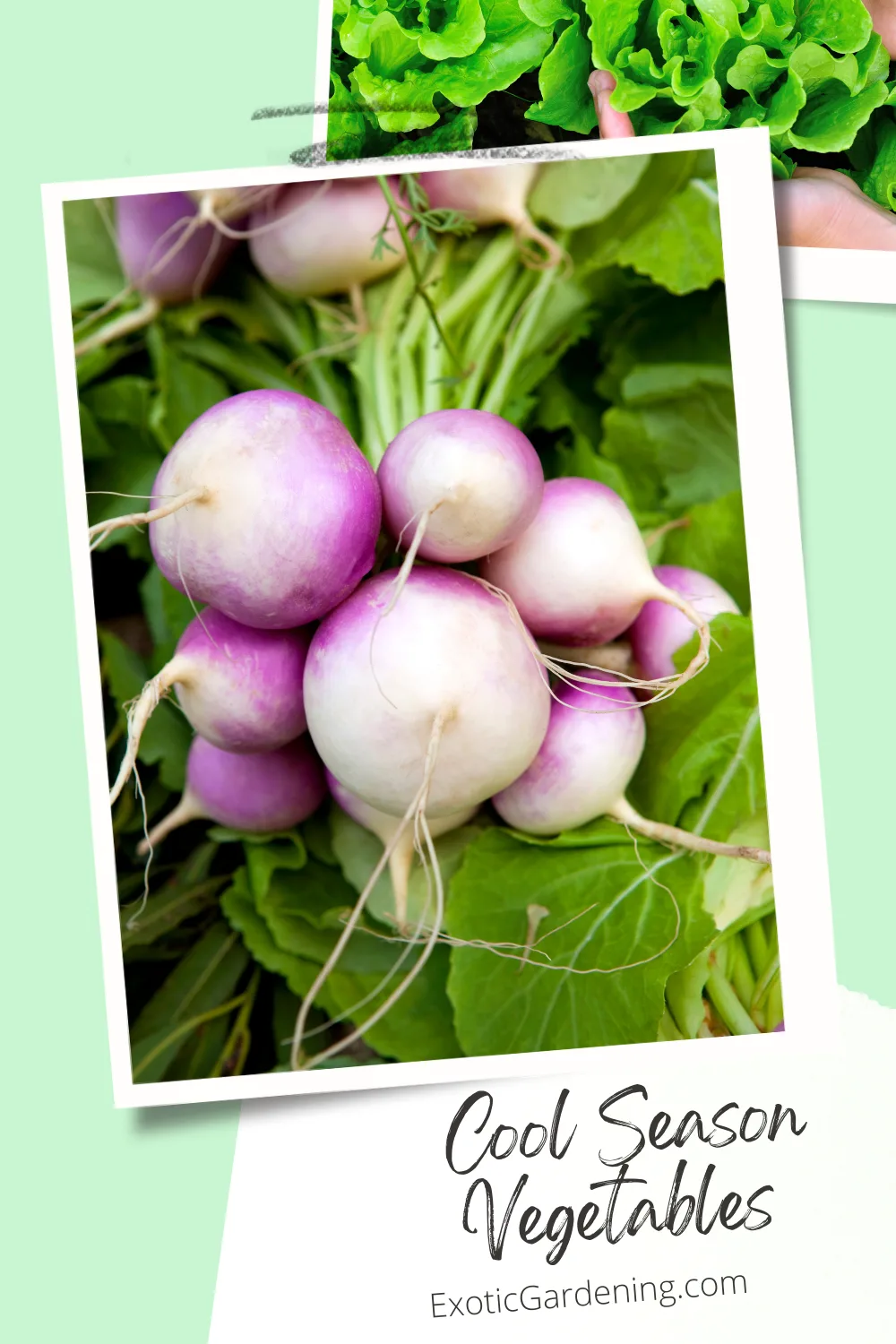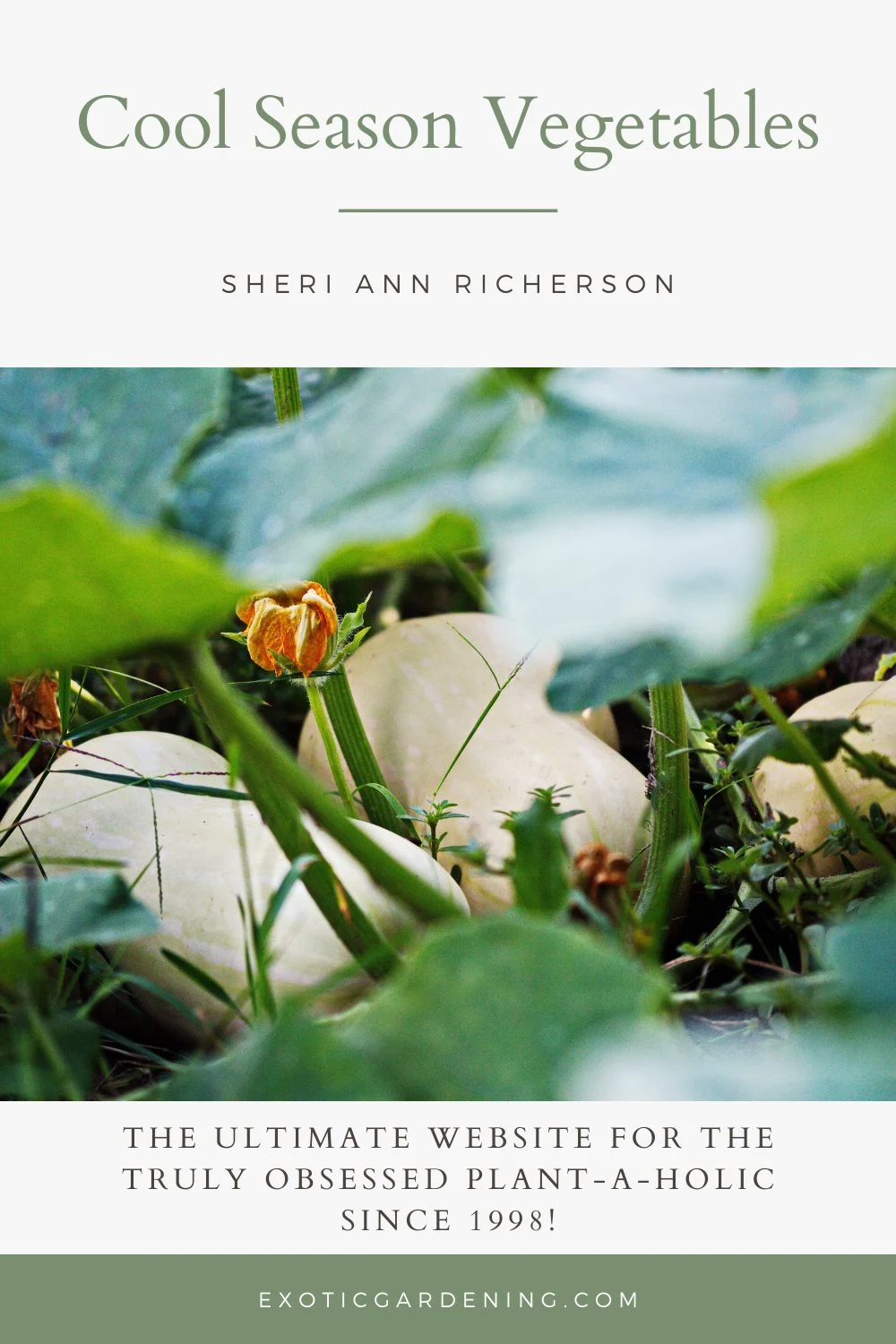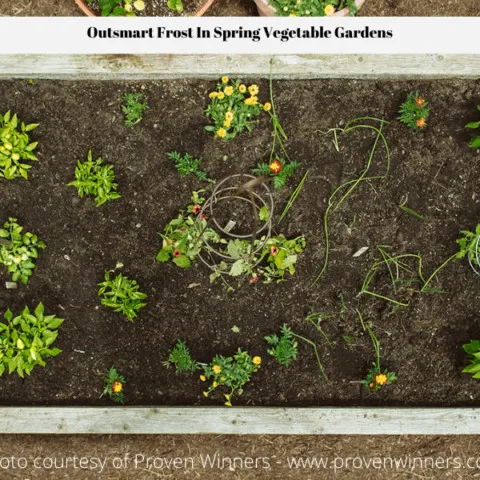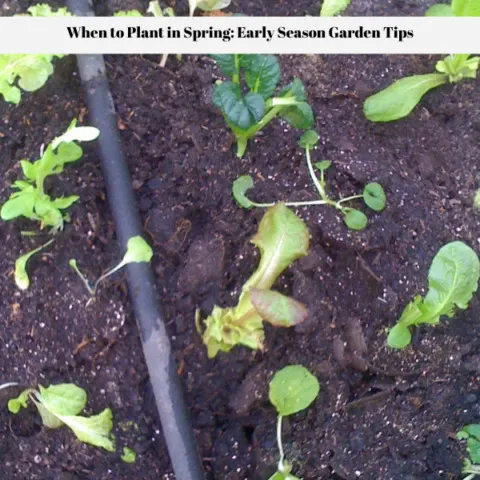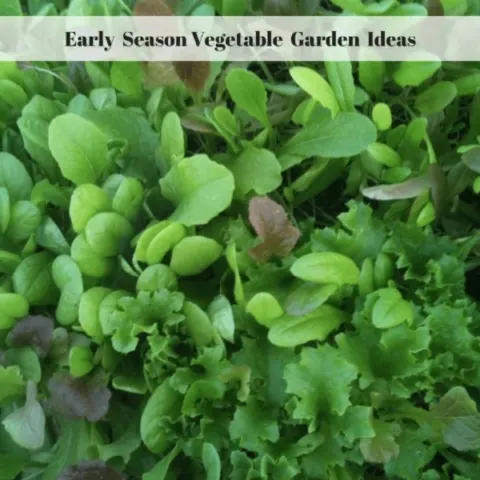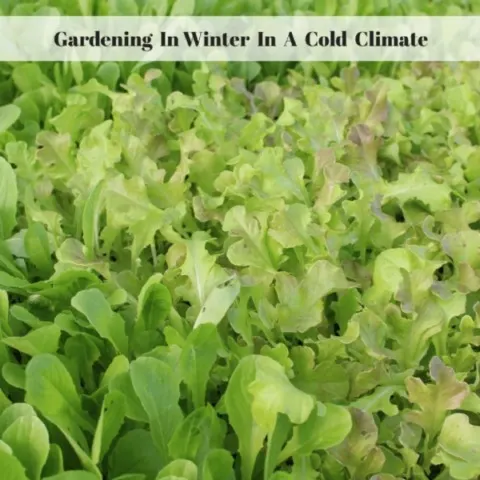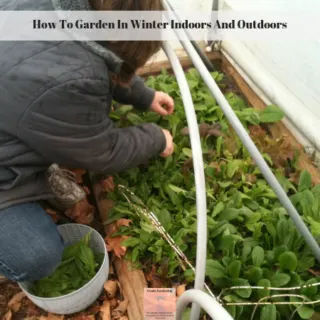Growing a variety of cool season vegeatbles is the easiest way to have fresh food in your own backyard from fall through spring.
Today I want to talk to you about the types of vegetables that do good in the fall garden.
Almost any vegetable that you plant in early spring, such as lettuce or peas will work for the fall garden.
In fact, many of these vegetables will overwinter in the garden under cover!
Cool Season Vegetables
Cauliflower broccoli, kale, brussel sprouts, mustard, turnips, winter squash, and sometimes pumpkin, if planted late enough in the year, will come up in the spring instead of starting to sprout and grow in the fall.
In fact, when you harvest your pumpkins for Halloween, there's no reason to pull those vines up or even remove the pumpkins that you don't intend to use.
Simply let them compost in place but be aware that the seeds inside the pumpkins will germinate the following spring - and if you till your garden it will spread those seeds to other areas where they could still germinate.
It is a well known fact that pumpkin and squash seed that has been put into a compost bin can germinate if the compost pile did not get hot enough to kill off the seeds.
Don't Remove Cool Season Vegetables Too Soon In The Fall
People sometimes get in a hurry to clean up their garden at the end of the season.
While I understand wanting things to look nice or even preparing it for the following spring, you potentially are losing weeks worth of extended harvest by doing this.
Think about the cool season vegetables you are growing and if possible, leave those alone.
Try to wait until the frost and cold weather kills them back before removing them from your garden.
Some crops like kale, Swiss chard, Sunchokes and Brussels sprouts actually taste sweeter once frost has hit them.
Here in Indiana, USDA Hardiness Zone ⅚, I have had kale, Swiss chard and Brussels sprouts survive in the open garden into December and been able to harvest fresh vegetables for both Thanksgiving and Christmas.
Make Sure The Cool Season Vegetables Are Mature Before Frost
If you intend to cover your cool season vegeatbles with a cold frame or high tunnel to extend the harvest even further into winter, make sure the plants are mature size before the first frost in your area.
You can also use an unheated greenhouse in place of a high tunnel.
Unless the plants are ones that can survive a frost, cover the plants with a layer of row cover and then put a cold frame or high tunnel over them.
Doing this will protect many of these cool season vegetables throughout the winter, allowing you to harvest them exactly when you want them.
Growing cool season vegeatbles also helps to lower your grocery bill during the winter months.
FAQ: Growing Cool Season Vegetables
Q: What are cool season vegetables?
A: Cool season vegetables are a group of plants that thrive in cooler temperatures typically found in the fall, winter, and early spring. These vegetables can withstand frost and cold weather, making them ideal for gardeners looking to extend their harvest season.
Q: Which vegetables are considered cool season vegetables?
A: Cool season vegetables include a variety of options such as cauliflower, broccoli, kale, Brussels sprouts, mustard, turnips, winter squash, and even late-planted pumpkins. These vegetables can be grown in the fall and often overwinter in the garden under cover.
Q: Can I leave pumpkin vines in the garden after Halloween?
A: Yes, you can leave pumpkin vines in the garden after Halloween. When the pumpkins compost in place, the seeds inside may germinate the following spring. Be cautious, as tilling the garden can spread these seeds to other areas.
Q: Why shouldn't I remove cool season vegetables too soon in the fall?
A: Removing cool season vegetables too soon in the fall can result in lost weeks of extended harvest. Some of these crops, like kale, Swiss chard, Sunchokes, and Brussels sprouts, actually taste sweeter after they've been exposed to frost. It's best to wait until frost and cold weather have killed them back before removing them from your garden.
Q: How can I extend the harvest of cool season vegetables into winter?
A: To extend the harvest of cool season vegetables into winter, make sure the plants are mature in size before the first frost in your area. You can cover the plants with a layer of row cover and then put a cold frame or high tunnel over them. This protective setup will keep many cool season vegetables thriving throughout the winter, providing you with fresh produce when you need it.
Q: How can growing cool season vegetables lower my grocery bill during winter?
A: Growing cool season vegetables at home can lower your grocery bill during the winter months. By extending your harvest season and having a variety of fresh produce in your garden, you can reduce the need to purchase these items from the store, ultimately saving money on groceries.
Remember, experimenting with cool season vegetables in your garden can be a rewarding and cost-effective way to enjoy fresh, homegrown produce throughout the cooler months.
Q: Can I use an unheated greenhouse to protect cool season vegetables?
A: Yes, you can use an unheated greenhouse in place of a high tunnel to protect cool season vegetables. An unheated greenhouse can provide the necessary shelter to keep these vegetables thriving during the winter months, allowing you to enjoy an extended harvest.
Q: Are there any specific USDA hardiness zones where cool season vegetables grow best?
A: Cool season vegetables can be grown in various USDA hardiness zones, but they are particularly well-suited to regions with colder winters. The specific varieties you choose and the timing of your planting will depend on your local climate conditions.
Q: Are there any other benefits to growing cool season vegetables?
A: Yes, there are several benefits to growing cool season vegetables. Apart from enjoying fresh produce during the winter, growing these vegetables can improve your gardening skills, reduce your environmental footprint by lowering food transportation, and contribute to a more sustainable lifestyle.
Q: What are some popular recipes or dishes I can make with cool season vegetables?
A: Cool season vegetables can be used in a variety of delicious recipes. Some popular options include roasted Brussels sprouts, kale and potato soup, cauliflower rice, turnip gratin, and pumpkin pie. The possibilities are endless, and you can get creative in the kitchen with your homegrown produce.
Q: Are there any common pests or diseases that affect cool season vegetables?
A: Yes, cool season vegetables can be susceptible to certain pests and diseases. Common issues may include aphids, cabbage worms, and fungal diseases like powdery mildew. Regular monitoring and proper garden maintenance can help you identify and address these problems early on.
Q: Can I grow cool season vegetables in containers or raised beds?
A: Absolutely! You can grow cool season vegetables in containers or raised beds, provided they have enough space and suitable growing conditions. Containers and raised beds offer better control over soil quality and temperature, making them excellent options for cultivating these vegetables.
Remember to adapt your gardening practices to your specific climate and preferences to make the most of your cool season vegetable garden.
The Backside Of The Gardening Calendar
Use Frost To Your Advantage
Did you know that there is a way to use frost to your advantage in the garden in both spring and fall? Read on to learn more.
Outsmart Frost in Spring Vegetable Gardens
Understanding how to outsmart frost in spring vegetable gardens leads to earlier harvests, less plant damage and a longer growing season.
When to Plant in Spring: Early Season Garden Tips
Know when to plant in spring by using these early garden season tips. These tips will allow you to get a head start on your vegetable garden.
Jump Start The Spring Garden With Winter Sown Vegetables
Get a jump start on the spring garden with winter sown vegetables. Once you know how to do this, its easy to grow vegetables year round.
Vegetable Garden Frost Protection: Extending Your Winter Gardening Season
Discover essential tips and techniques for vegetable garden frost protection. Extend your winter gardening season with our guide.
Gardening In Cold Climates In Early January
Gardening in cold climates in January without supplemental heat is possible. The seeds, plants and garden structure is what matters.
Vegetables to Plant in January: Garden Tips for Year-Round Growing
There are a number of vegetables to plant in January as well as some flowering plants. Indoors or out, find out dates to start in Indiana.
The Best Vegetables To Plant In February
There are a number of cool season vegetables to plant in February directly in the garden even if you live in a cold climate.
Embracing The Beauty of Winter: A Guide To Winter Flowering Plants
Elevate your garden with winter flowering plants. Explore cold-hardy varieties, garden prep, and nurturing tips.
How To Garden In Winter Indoors And Outdoors
Learn how to garden in winter indoors and outdoors. There are many vegetables and herbs that don't mind the cold or thrive in containers.
Save Money! Harvest Free Vegetables Year-Round In Any Climate!
Yes, you can harvest vegetables year-round, even if you live in a cold climate by planting at the right time and gardening under cover.
September Is Here But Don't Quit Gardening Now!
September is here but there is no need to quit gardening. Plant those cool weather crops from seed or transfer plants into the garden.
Monkshood Flowers For The Fall
There are some late blooming flowers for the fall season such as monkshood. Autumn monkshood is known to bloom from September to November!




